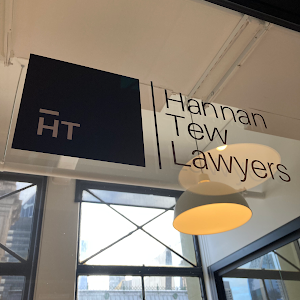 Australia’s Administrative Review Tribunal (Tribunal) replaced the Administrative Appeals Tribunal (AAT) on 14 October 2024.
Australia’s Administrative Review Tribunal (Tribunal) replaced the Administrative Appeals Tribunal (AAT) on 14 October 2024.
The Tribunal undertakes independent merits review of decisions made by Federal Government departments, agencies and ministers. This includes various areas of commonwealth legislation such as social security, child support, workers compensation and the National Disability Insurance Scheme (NDIS), but notably a substantial number of immigration matters.
Most visa refusals will be reviewed by the Migration and Refugee Division of the Tribunal. However, certain immigration decisions must be reviewed by the General Division which comes with some significant differences.
Which matters are reviewed by the General Division?
This article focuses on an expedited review of decisions under sections 501 and 501CA of the Migration Act 1958 (Cth) (the Migration Act), being:
- visa refusals or cancellations on character grounds; and
- non-revocation of a mandatory visa cancellation on character grounds.
While not discussed in detail here, decisions to refuse Australian Citizenship fall under the General Division as well.
Applying for review in the General Division
The Migration Act and Migration Regulations 1994 (Cth) (Migration Regulations) contain strict requirements for applying for review, which, if not followed, can result in the application being invalid.
Applicants must submit their application for review within a specified timeframe and pay a prescribed fee. For example, an application for review of a refused or cancelled visa on character grounds must be submitted to the Tribunal within 9 days of the Minister’s decision.
If a visa refusal or cancellation is received, it is incredibly important to confirm the deadline to apply for review. If the date is missed, the Tribunal has no power to extend it.
Directions Hearing
Character matters progress quickly, principally because the Tribunal is required by law to review a matter within 12 weeks of the Minister’s decision.
Once the application for review is submitted, the applicant can then expect for a Directions Hearing to be scheduled.
The Directions Hearing is a relatively informal meeting between the applicant and their representative, the Minister’s representative (usually from another law firm), and the Tribunal’s Member or Senior Member who will oversee the matter and make the final decision.
Legal submissions and supporting evidence are not required at this stage. Rather, the Tribunal Member will outline their expectations on how the matter will progress, and propose timeframes and important dates to ensure all parties can participate. The applicant and Minister (through their representatives) will have an opportunity to raise any practical issues.
Written Direction
Following the Directions Hearing, the Tribunal will issue a written Direction confirming what had been discussed and agreed on.
If either party later fails to comply with the Direction, the Tribunal may list the matter for a second Directions Hearing in which the breaching party would be required to explain why they did not comply. More gravely still, non-compliance with the Direction could result in the Tribunal dismissing the application.
The following steps can generally be expected:
- Access to materials by way of summons;
- Minister to provide the G-Documents;
- Applicant to provide their Statement of Facts Issues and Contentions;
- Minister to provide their Statement of Facts Issues and Contentions;
- Applicant to provide their response; and
- Hearing.
You can read more about each stage within the tabs below.
1. Requesting material by way of summons
Both parties can expect an opportunity to request access to material by way of summons.
In a character matter, for example, one party may wish to issue summons to access court documents or police records, in case it contains new information that will support their case.
If either party intends to make such a request, they must do so via the Tribunal by the deadline specified in the Direction.
Once the third party subject to the summons has provided the requested material (if any), both parties and the Tribunal will be given access.
2. Access to the G-Documents
Under section 501G of the Migration Act, the Minister must provide the applicant and the Tribunal with a copy of all documents that were relevant to the making of the decision (known as the “G-Documents”).
Again, the Tribunal’s Direction will specify when exactly the Minister must provide this.
3. Applicant’s Statement of Facts Issues and Contentions
The next, and possibly most significant step for the applicant is to provide the Tribunal and the Minister with:
- their Statement of Facts, Issues and Contentions;
- signed Statements from each witness who will be called at the hearing; and
- all reports, records, and any other documents which applicant intends to rely on at the hearing.
In other words, the applicant is the first to present their arguments outlining why they believe the Minister’s decision was wrong.
As the title suggests, the Statement of Facts, Issues and Contentions should cover:
- The facts of the matter in a chronological order, which the applicant believes are relevant and necessary. It should not contain opinions, and should be supported with evidence;
- The issues of the matter, being what exactly is in dispute and what the Tribunal needs to finally determine; and
- The contentions, being the proposed conclusions that the Tribunal should make and why, referring to the supporting evidence, other cases, and legislation where appropriate.
4. The Minister’s Statement of Facts Issues and Contentions
The Minister then provides their Statement of Facts, Issues and Contentions, and any further evidence they intend to rely on at the hearing.
In the context of a character matter, the Minister’s State of Facts Issues and Contentions will likely re-iterate why the visa refusal or cancellation should be upheld.
5. The applicant’s opportunity to respond
After having the opportunity to review the Minister’s arguments, the applicant has one further opportunity to provide written submissions and evidence.
Responding is not mandatory, but it could be important, if, for example, critical facts are in dispute or inconsistent information needs to be clarified.
6. Final Hearing and the 2-Day Rule
Once all written submissions have been provided in accordance with the Direction, the matter will be listed for a final hearing. Hearings are often in-person.
Sections 500(6H) and 500(6J) of the Migration Act notes that the Tribunal can only consider information presented orally at the hearing if that information had been provided to the Tribunal in a written document at least 2 business days before the hearing. In other words, a party cannot make oral submissions at the hearing on new issues, facts or contentions that had not been mentioned at an earlier stage.
The hearing usually begins with procedural formalities and attendance-taking. The Member may make some comments, confirm what the issue to be determined is, and then allow both parties to make their opening arguments.
Notably, at the hearing, witnesses can be called (as long as they had provided a written statement). For example, useful witnesses may be family members who would be impacted by the decision, good friends, community leaders, or employers who can present oral evidence in support of the applicant.
It is important that witnesses are prepared, as they will not only be questioned by the applicant’s representative (examination in chief), but the Minister’s representative as well (cross-examination). The rules of evidence do not apply at the Tribunal, but of course witnesses should be questioned neutrally and respectfully (for example, leading questions would still be discouraged).
The Member can also intervene and ask witnesses and representatives questions. Depending on how complex the matter is, this may go for hours and take place over multiple days.
When all witnesses have provided their evidence and there is no further necessary information to obtain, both parties will have an opportunity to make their closing arguments and there may be further discussion on the facts and legal issues with the Member.
Decision
It is quite unlikely that the Member will be able to make a final decision at the hearing. However, keeping in mind that the Tribunal must make a decision within 12 weeks, their written decision is relatively swift.
The role of the Tribunal is to re-assess the facts and applicable legislation, and so has the ability to either:
- Affirm (uphold) the original decision;
- Set aside (overturn) the original decision;
- Remit (send back) the original decision for reconsideration.
If the decision is affirmed, the consequences for the applicant can be very serious as they may be subject to detention or removal from Australia. At this point the matter becomes exceptionally complex, but grounds for judicial review at the Federal Court may still exist.
How is this different to the Migration Division?
Some key differences between the Migration Division and the General Division are:
- Timeframes are much shorter. While some matters in the Migration Division can take years to be reviewed, character matters with the General Division must be reviewed rapidly and within a matter of merely a few months.
- The Minister will be represented by a lawyer (either a solicitor or a barrister) in the General Division. In the Migration Division, the Minister is not represented and so only the Tribunal Member, applicant and the applicant’s representative participate;
- Representatives can provide greater advocacy. Representatives can make opening arguments, closing arguments, call on and question witnesses, intervene and provide clarification if appropriate. Hearings in the Migration Division are more informal, and usually the Member will only want to speak with the applicant directly.
Fees
Our fees for a matter can vary on the circumstances, but an estimate is as follows:
Application
$ 1,650+
inc GST- Lodgement of an application to the Tribunal
- Merits review file request (FOI)
- Review of documentation
Submission Fee
$ 6,600+
inc GST- Preparation of supporting documentation
- Lodgement of documentation to the Tribunal
- Monitoring of the application
Hearing Fee
$ 2,200+
inc GST- Preparation for hearing
- Attendence at the hearing
- Post-hearing monitoring
Filing FeeFixed
Do you require assistance?
Understanding the Tribunal process is important, such that seeking professional legal advice can have a significant impact on the outcome of your case.
Our team at Hannan Tew has extensive experience with Tribunal applications. If you require assistance with an ART review, or have any other immigration related queries, get in touch with our experienced team. Contact us by email at [email protected] or by phone at +61 3 9016 0484. You can also subscribe to our newsletter for the latest Australian immigration news straight to your inbox.

